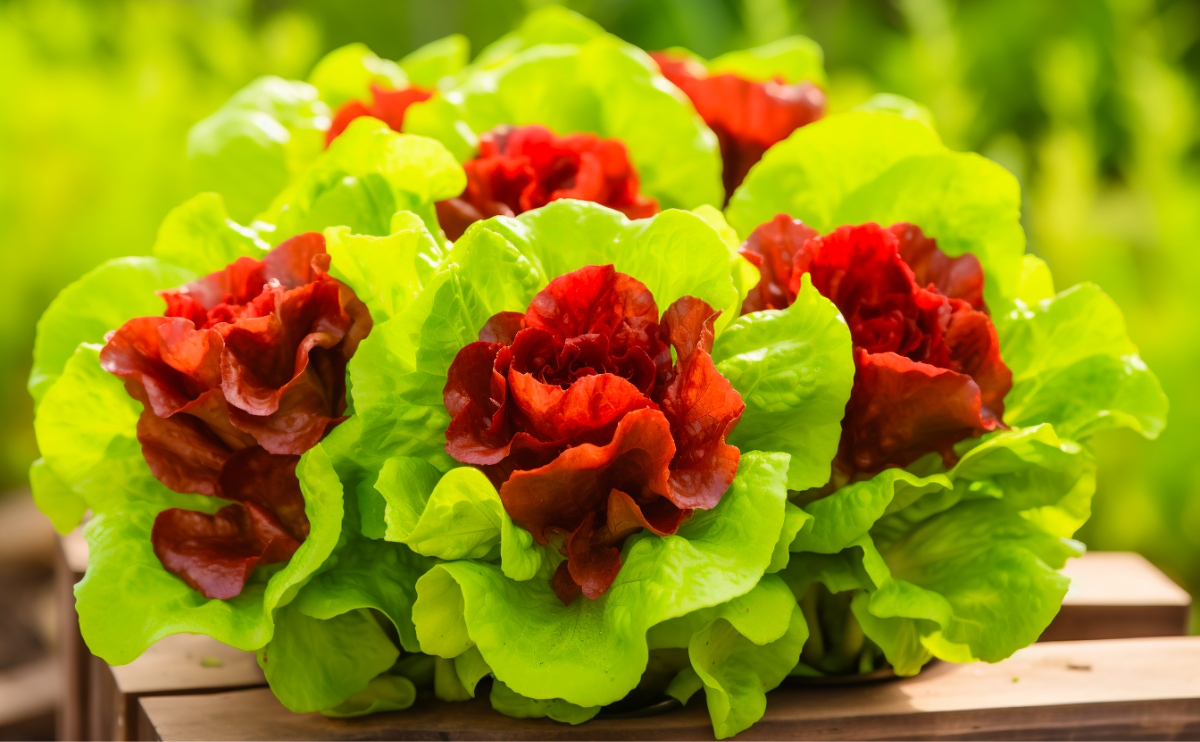Growing lettuce in the scorching heat of summer can be a challenge for many gardeners across the USA. However, armed with the right knowledge and techniques, you can successfully cultivate lettuce varieties that not only tolerate the heat but also flourish in hot weather. In this comprehensive guide, we will delve into essential tips and tricks to help you grow a bountiful crop of lettuce, making your summer garden a vibrant and productive oasis.
Understanding Hardiness Zones
Understanding your USDA hardiness zone is a critical aspect of successful gardening in FarmerValley. The USDA hardiness zone maps divide geographical areas based on their average annual minimum temperatures. By knowing your specific hardiness zone, we can select plants that are well-suited to the climate conditions of our region, ensuring their survival and growth.
In this regard, we have written another informative article on our website, titled “USDA Hardiness Zones Explained: What’s My Zone?” This comprehensive guide delves deeper into the concept of hardiness zones, explaining how they are determined and what they mean for gardeners. It highlights the significance of these zones in helping us choose plants that can withstand the temperatures and climate conditions specific to your area.
If you’re interested in discovering your USDA hardiness zone and learning more about how to use this valuable resource in your gardening endeavors, we invite you to read the full article by clicking on the following link: USDA Hardiness Zones Explained: What’s My Zone?
In that article, you will find detailed information on how hardiness zones are classified, what each zone represents in terms of temperature variation, and how the maps are created using extensive temperature data.
Choosing Heat-Tolerant Lettuce Varieties
Selecting the right lettuce varieties is the key to a thriving summer garden. Opt for heat-tolerant types that have been specifically bred to endure high temperatures and resist bolting. Some popular choices include:
Buttercrunch Lettuce (Lactuca sativa ‘Buttercrunch’)
Description: Buttercrunch lettuce is a favorite among gardeners for its tender, buttery leaves and delightful flavor. This heat-tolerant variety forms loose heads with a rosette of crinkled, light green leaves. Its texture remains crisp even in hot weather, making it an excellent choice for summer salads and sandwiches.
Growing Tips: Sow buttercrunch lettuce seeds directly into well-draining soil, about 1/4 inch deep. Provide consistent moisture to prevent bitterness and avoid excessive heat stress. Harvest individual leaves or the whole head when fully grown. Consider providing partial shade during the hottest parts of the day to protect the lettuce from intense sunlight.
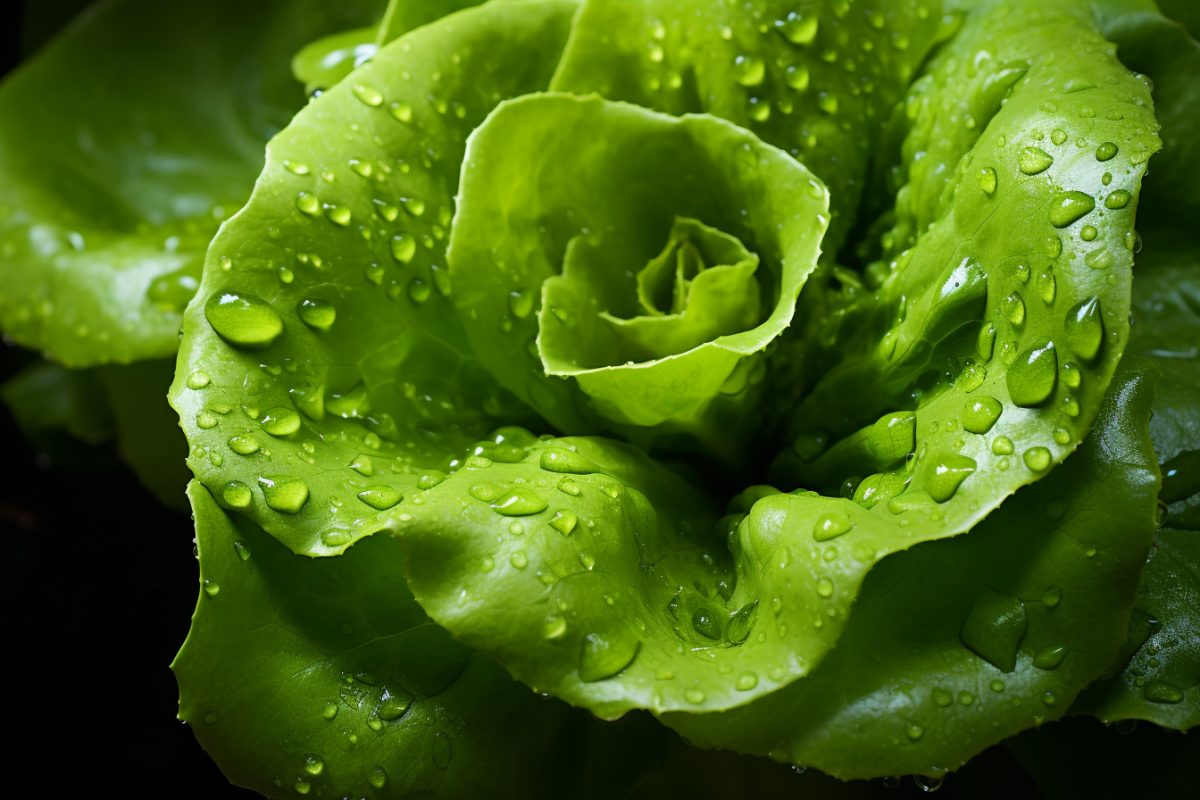
Green Oakleaf Lettuce (Lactuca sativa ‘Green Oakleaf’)

Description: Green Oakleaf lettuce is known for its beautiful oak-shaped leaves that have a tender and mild flavor. This heat-tolerant variety forms loose heads with delicate, bright green leaves that have a slightly crunchy texture. Its resistance to bolting allows for extended harvesting throughout the summer.
Growing Tips: Directly sow green oakleaf lettuce seeds in well-prepared soil. Keep the soil consistently moist, especially during the hottest days, as dry conditions can lead to bitter-tasting leaves. Harvest individual outer leaves to encourage new growth from the center.
Prizehead Lettuce (Lactuca sativa ‘Prizehead’)
Description: Prizehead lettuce is a striking variety that stands out in the garden with its ruffled, deep red leaves. Its flavor is a pleasant combination of sweet and slightly bitter. Despite its bold appearance, this heat-tolerant lettuce remains tender and palatable throughout the summer months.
Growing Tips: Plant prizehead lettuce seeds in fertile, well-draining soil. Provide regular watering to prevent bitterness and ensure that the plant stays hydrated in the heat. This variety is an excellent choice for adding color and texture to your salads.
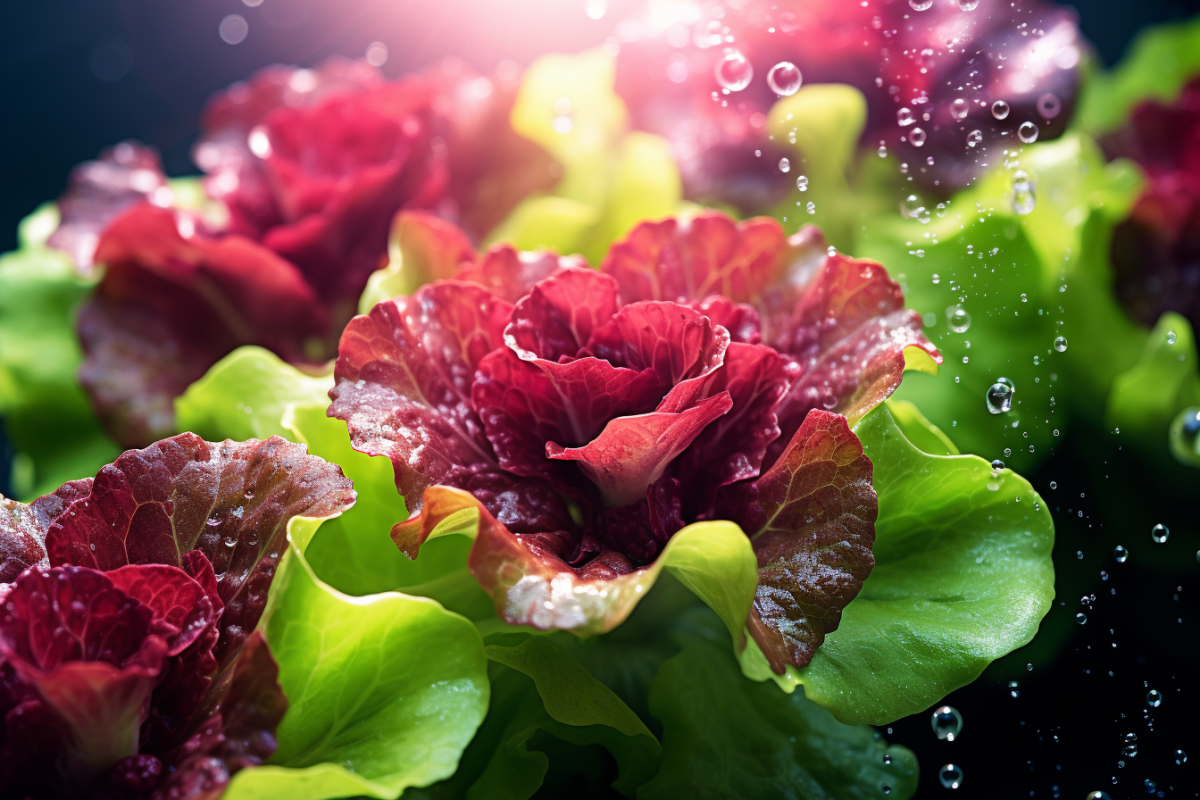
Cimarron Red Romaine (Lactuca sativa ‘Cimarron Red’)

Description: Cimarron Red Romaine is a heat-tolerant romaine lettuce variety that showcases beautiful bronze-red leaves. It forms elongated heads with a mild, sweet flavor and a satisfying crunchy texture. This variety is a go-to option for summer gardens as it maintains its quality even in hot conditions.
Growing Tips: Plant Cimarron Red Romaine seeds in well-amended soil with good drainage. Keep the soil consistently moist to avoid bitterness and toughening of the leaves. Harvest the outer leaves as the plant grows, or cut the entire head when it reaches full maturity.
Butterhead Lettuce (Lactuca sativa ‘Bibb’)
Description: Butterhead lettuce, also known as Bibb lettuce, is a heat-tolerant variety that forms small, compact heads with tender, buttery-textured leaves. Its flavor is mild and delicate, making it a preferred choice for salads and sandwiches during the hot summer months.
Growing Tips: Sow Bibb lettuce seeds in loose, fertile soil. Keep the soil evenly moist, and avoid letting it dry out completely. Consider using mulch to conserve moisture and regulate soil temperature. Harvest the whole head or individual outer leaves as needed.
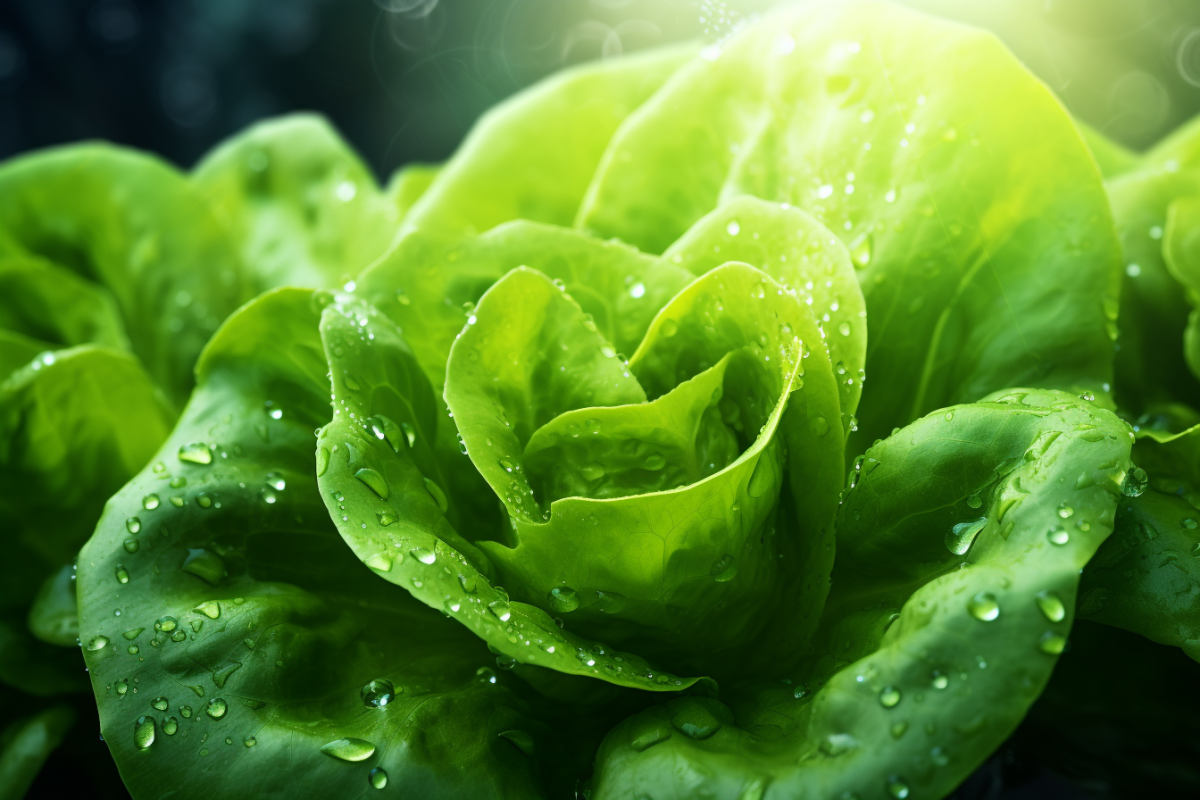
Iceberg Lettuce (Lactuca sativa ‘Iceberg’)
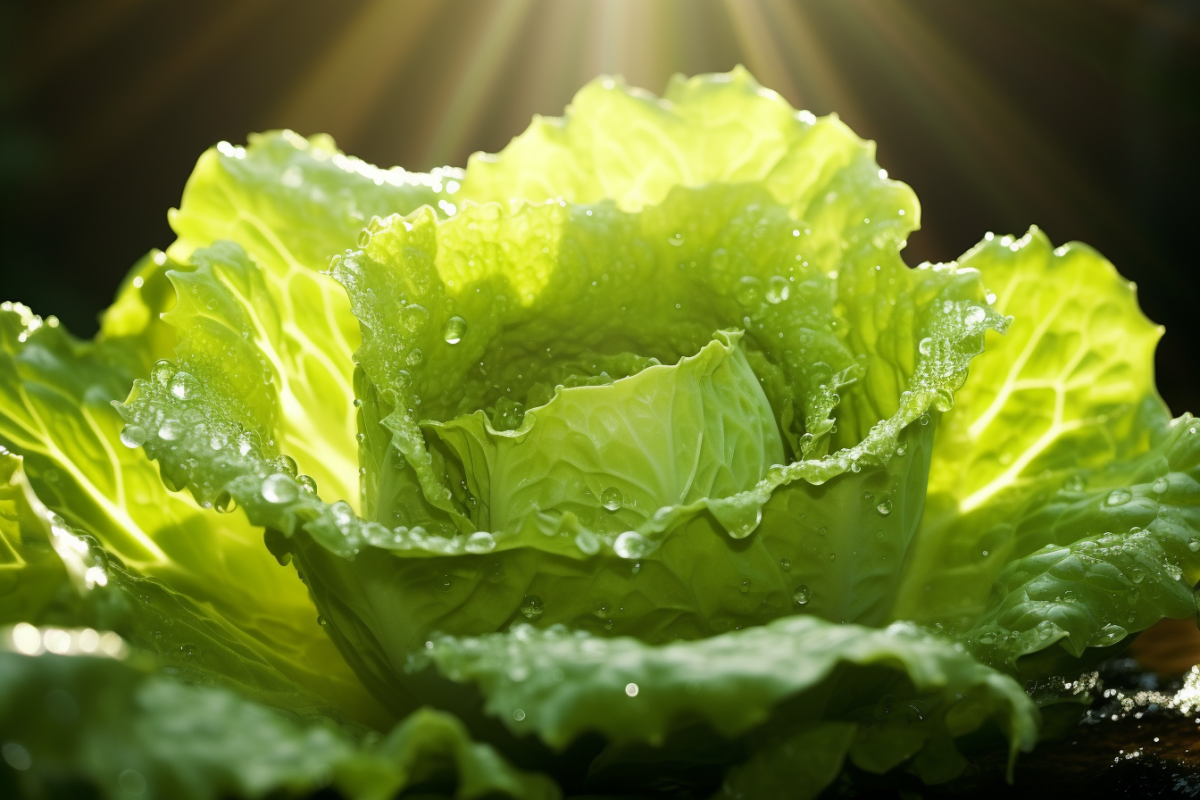
Description: Iceberg lettuce is a well-known variety with tightly packed, crisp heads and a mild flavor. While it is not as heat-tolerant as some other lettuce types, it can still be grown successfully in cooler regions during the summer with proper care and protection from intense sunlight.
Growing Tips: Start Iceberg lettuce seeds indoors and transplant seedlings to the garden after the danger of frost has passed. Provide a consistent supply of water to prevent bitterness and ensure proper head development. Consider using shade cloth during the hottest part of the day to protect the lettuce from direct sun exposure.
Arugula (Eruca sativa)
Description: Arugula, also known as rocket or roquette, is a peppery, heat-tolerant green that adds a delightful zing to salads, sandwiches, and pizzas. Its deeply lobed leaves have a bold flavor that intensifies as the weather warms up, making it an excellent choice for summer dishes.
Growing Tips: Directly sow arugula seeds in well-draining soil. This fast-growing green requires regular watering, especially in hot weather, to prevent it from becoming excessively spicy and bitter. Harvest individual leaves when young for the mildest flavor and continuous growth.
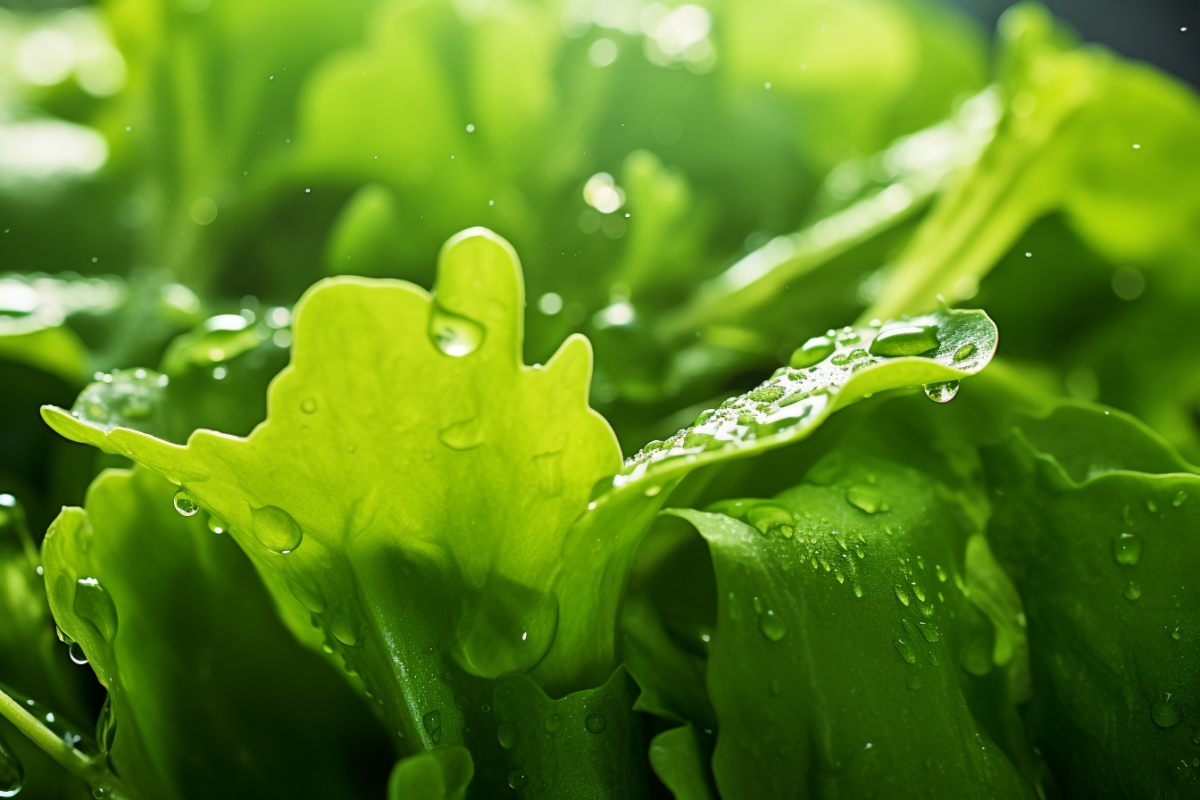
Swiss Chard (Beta vulgaris subsp. cicla)

Description: Swiss chard, also known as rainbow chard, is a vibrant and versatile heat-tolerant green that comes in a stunning array of colors, including red, pink, yellow, and green. Its large, glossy leaves and colorful stalks make it an attractive addition to any garden. Swiss chard has a mild, slightly earthy flavor that complements various dishes, and it continues to produce throughout the summer.
Growing Tips: Sow Swiss chard seeds in well-draining soil with consistent moisture. Harvest the outer leaves regularly, and the plant will continue to produce new foliage from the center. Swiss chard’s resilience to both heat and cold makes it a great choice for year-round gardening in various climates.
Optimal Planting Time
Timing is crucial when growing lettuce in the summer. The scorching heat can be detrimental to tender lettuce seedlings, so it’s essential to choose the right time for planting. For best results, sow your lettuce seeds or transplant seedlings during the early morning or late afternoon. These times of the day offer milder temperatures and reduced sun intensity, protecting your young plants from the intense midday heat.
If you reside in cooler climates, starting your lettuce seeds indoors is a smart strategy. This allows you to get a head start on the growing season, giving your lettuce a better chance to establish strong roots and withstand the upcoming summer heat. Later, when the weather warms up and all risk of frost has passed, you can transplant your well-developed seedlings into the outdoor garden.
Proper Soil Preparation
Creating an optimal environment for your lettuce plants begins with proper soil preparation. A well-draining, nutrient-rich soil bed is crucial for the health and productivity of your lettuce. Start by choosing a suitable planting location with good drainage, ensuring that water doesn’t stagnate around the roots, which could lead to root rot.
To enhance the soil structure and improve water retention during hot spells, incorporate organic matter such as compost or well-rotted manure into the soil. The added organic material not only boosts fertility but also helps the soil retain moisture, preventing the soil from drying out too quickly during the scorching summer months.
In terms of soil pH, aim for a slightly acidic to neutral range of 6.0 to 7.0. This pH range is optimal for lettuce cultivation, as it ensures the availability of essential nutrients and supports healthy growth.
Mulching and Watering
Maintaining proper soil moisture is crucial for growing lettuce in the summer. Mulching plays a vital role in conserving soil moisture and regulating soil temperature. Apply a layer of organic mulch, such as straw or shredded leaves, around your lettuce plants. The mulch acts as a protective barrier, reducing water evaporation and keeping the soil cooler during hot periods.
Consistent watering is essential for lettuce plants, but it’s equally important not to overwater them. Overwatering can lead to waterlogged soil and root rot. Opt for drip irrigation or a soaker hose, which deliver water directly to the soil around the plant roots, minimizing water splashing on the leaves. This targeted watering approach ensures that your lettuce receives the right amount of moisture without wasting water.
Providing Shade and Protection
Shielding your lettuce plants from direct sunlight during the hottest part of the day is essential to prevent wilting and bolting. Bolting is the premature production of flower stalks, which can reduce the quality of your lettuce leaves.
One effective method for providing shade is using shade cloth or row covers. These materials create partial shade, allowing your lettuce to thrive even during scorching afternoons. Position the shade cloth or row covers to protect your lettuce from the harshest sun rays while still allowing sufficient light for growth.
Proper Harvesting Techniques
To savor the freshest and most flavorful lettuce, mastering proper harvesting techniques is vital. When harvesting, focus on the outer leaves, which are ready for consumption while allowing the inner leaves to continue growing. Regular harvesting of the outer leaves promotes new growth, ensuring a continuous supply of fresh lettuce throughout the summer season.
Harvesting lettuce in this manner not only maintains the plant’s productivity but also prevents the development of bitterness, a common occurrence in older lettuce leaves. By employing proper harvesting practices, you can enjoy the full potential of your summer lettuce crop and savor the delicious, crisp flavors of freshly picked greens.
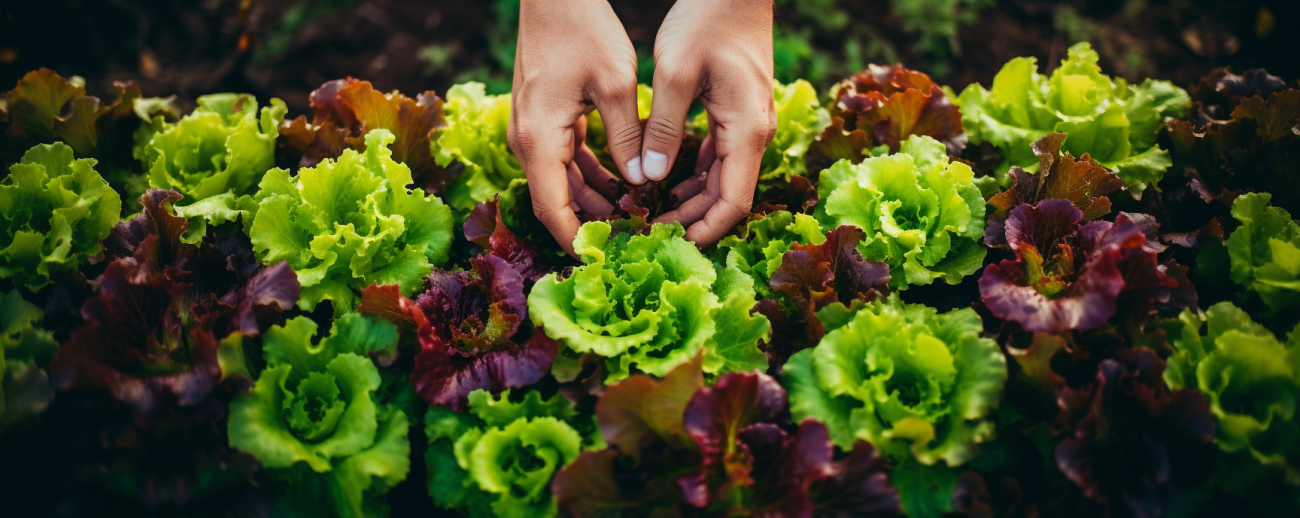
By following these expert tips, you can cultivate a successful lettuce crop that thrives even in the heat of summer. Be sure to select heat-tolerant lettuce varieties suited to your hardiness zone, provide proper soil preparation, and implement effective watering and shading techniques. With careful attention and dedication, your summer lettuce garden will be a source of pride and abundance throughout the warm season. Happy gardening!
Detailed Guides for Planting Vegetables, Herbs, Greens & Lettuce, Peppers, and Wildflowers:
At FarmerValley we offer detailed guides for planting vegetables, herbs, greens & lettuce, peppers, and wildflowers. These guides provide step-by-step instructions for planting and caring for your plants, as well as tips for getting the best results. Check our growing guides and plant your non-GMO garden with confidence.
Planting non-GMO seeds is a great way to enjoy fresh and healthy vegetables and herbs while also knowing that you’re avoiding harmful additives. With these essential tips and top lists, as well as our detailed guides, you’ll be on your way to a bountiful harvest in no time.
Elevate your gardening experience with FarmerValley’s premium seeds! Choose from our wide selection of high-quality varieties to enhance your garden and enjoy a bountiful harvest. Trust in our expertise and start your journey towards a thriving and beautiful garden today.

